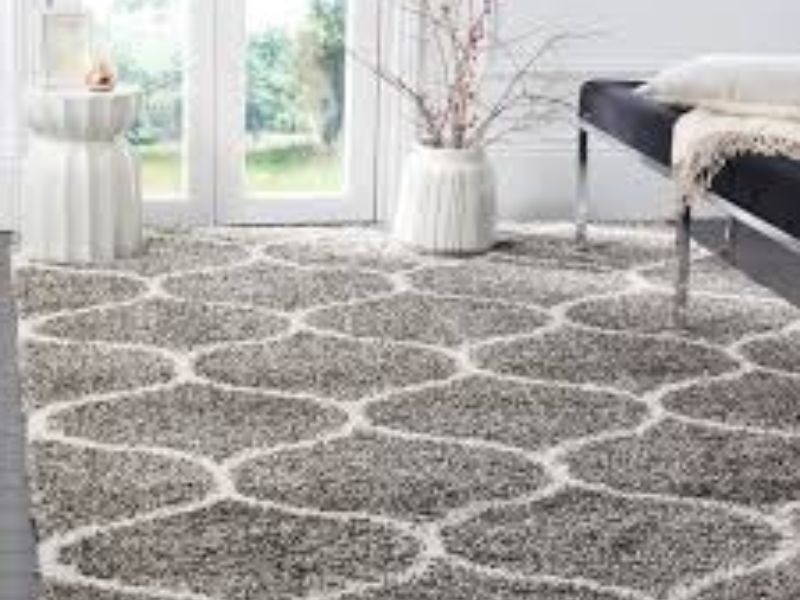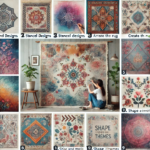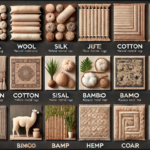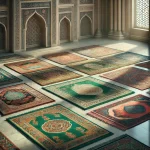Thick area rugs are more than just decorative pieces for your home; they embody a blend of elegance, comfort, and practicality that can transform any space. Whether you are looking to enhance the aesthetic appeal of a room, provide a cozy underfoot experience, or add a layer of warmth and sound insulation, thick area rugs can be the perfect solution. This comprehensive guide delves into the world of thick area rugs, exploring their benefits, types, materials, and how to choose the right one for your home.
The Benefits of Thick Area Rugs
Thick area rugs offer numerous advantages that go beyond mere decoration:
- Comfort and Cushioning: One of the primary benefits of thick area rugs is the luxurious comfort they provide. The dense pile creates a soft, cushioned surface that is gentle on your feet, making it ideal for living rooms, bedrooms, and any other area where comfort is a priority.
- Insulation: Thick area rugs offer excellent thermal insulation, helping to retain warmth during the colder months. This can be especially beneficial in rooms with hardwood or tile flooring, which tend to be cooler.
- Sound Absorption: The density and thickness of these rugs make them effective at absorbing sound, reducing noise levels in a room. This can be particularly useful in apartments or multi-story homes where soundproofing is important.
- Aesthetic Appeal: Thick area rugs can add a touch of luxury and sophistication to any room. They come in various designs, colors, and patterns, allowing you to find one that complements your décor style perfectly.
- Protection for Flooring: These rugs can protect your flooring from scratches, scuffs, and general wear and tear, extending the life of your hardwood, laminate, or tile floors.
Types of Thick Area Rugs
There are several types of thick area rugs, each with its unique characteristics and benefits:
- Shag Rugs: Known for their long, plush pile, shag rugs are synonymous with luxury and comfort. They add a retro or bohemian vibe to a room and are perfect for creating a cozy, inviting space.
- Wool Rugs: Wool is a natural fiber known for its durability, softness, and insulating properties. Thick wool rugs are not only comfortable but also highly resilient, making them a great investment for high-traffic areas.
- Hand-Knotted Rugs: These are often crafted with a high pile and intricate designs. Hand-knotted rugs are made by skilled artisans and can be quite expensive, but they offer unparalleled quality and longevity.
- Tufted Rugs: Tufted rugs have a dense pile created by looping yarn through a backing material. They are generally more affordable than hand-knotted rugs and come in various styles and designs.
- Braided Rugs: These rugs are made by braiding strips of fabric or yarn together. Thick braided rugs have a rustic charm and are often reversible, offering versatility in design.
Materials Used in Thick Area Rugs
The material of a rug significantly affects its texture, durability, and maintenance requirements. Common materials used in thick area rugs include:
- Wool: A popular choice for its softness, warmth, and durability. Wool rugs are naturally stain-resistant and easy to clean, making them ideal for high-traffic areas.
- Cotton: While not as thick as wool, cotton rugs can still offer a substantial pile. They are lightweight, easy to clean, and often used in casual or contemporary settings.
- Synthetic Fibers: Materials like polyester, nylon, and polypropylene are used to create thick, durable rugs that are often more affordable than natural fiber rugs. They are stain-resistant and easy to maintain.
- Silk: Silk rugs are known for their luxurious feel and sheen. However, they are less durable and more expensive, making them better suited for low-traffic areas or as decorative pieces.
- Jute and Sisal: These natural fibers create thick, textured rugs with a rustic appearance. They are durable and eco-friendly but can be rough underfoot and less comfortable than wool or synthetic options.
Choosing the Right Thick Area Rug for Your Home
When selecting a thick area rug, several factors should be considered to ensure you choose the best one for your needs:
- Size: Measure your space carefully to determine the appropriate rug size. In a living room, the rug should be large enough to fit under the front legs of your furniture. In a bedroom, it should extend beyond the bed to provide a soft landing for your feet.
- Style and Design: Consider the existing décor of your room. Choose a rug that complements your furniture, color scheme, and overall style. Whether you prefer a traditional, modern, or eclectic look, there is a thick area rug to match.
- Pile Height: The pile height affects the rug’s comfort and appearance. Higher piles offer more cushioning and a plusher feel, while lower piles are easier to clean and maintain.
- Material: Consider the material based on your lifestyle and the room’s function. For high-traffic areas, durable materials like wool or synthetic fibers are ideal. For a touch of luxury in a low-traffic area, silk or hand-knotted rugs are excellent choices.
- Maintenance: Thick rugs can trap dust and dirt more easily, so consider how much effort you are willing to put into cleaning and maintaining the rug. Some materials require professional cleaning, while others can be easily maintained with regular vacuuming and spot cleaning.
Care and Maintenance of Thick Area Rugs
Proper care and maintenance can extend the life of your thick area rug and keep it looking beautiful:
- Regular Vacuuming: Vacuum your rug at least once a week to remove dust and dirt. Use a vacuum with adjustable height settings to avoid damaging the fibers.
- Spot Cleaning: Immediately clean spills and stains to prevent them from setting. Use a mild detergent and a clean cloth, and avoid harsh chemicals that can damage the rug.
- Professional Cleaning: Have your rug professionally cleaned every 12-18 months, especially if it is made of natural fibers like wool or silk. Professional cleaning can remove deep-seated dirt and restore the rug’s appearance.
- Rotate the Rug: Rotate your rug every few months to ensure even wear and prevent certain areas from becoming more worn than others.
- Use Rug Pads: A rug pad can provide additional cushioning, prevent slipping, and protect the rug and flooring from damage.
Conclusion
Thick area rugs are a versatile and valuable addition to any home, offering a combination of comfort, style, and practicality. Whether you are looking to create a cozy retreat in your living room, add warmth to your bedroom, or protect your floors, a thick area rug can meet your needs. By understanding the different types, materials, and maintenance requirements, you can choose the perfect rug to enhance your space and enjoy its benefits for years to come.






